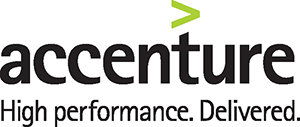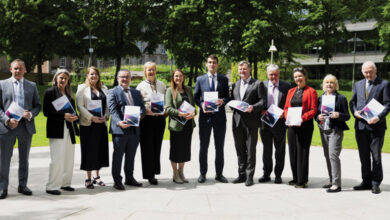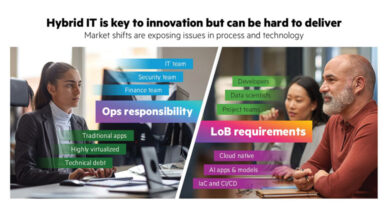Advanced analytics

Kieran Towey, Head of Accenture’s Analytics Innovation Centre in Dublin, shares insights into how Public Service organisations can leverage expertise from other sectors to create a step change in their analytics capabilities.
Over the last two decades there has been an enormous increase in both the volume and type of data available to organisations in relation to the conduct of their core business. This explosion of data and the evolution of offerings in the analytics space present tremendous opportunities for organisations.
Certain industries have led the way in exploiting these changes and using advanced analytics to drive competitive advantages for their businesses.
Kieran Towey, Head of Accenture’s Analytics Innovation Centre in Dublin says, “Public Service organisations in Ireland and abroad have begun to harness the potential of advanced analytics with an initial focus on combatting fraud and increasing compliance. As the use of analytics accelerates in all industries, Public Service organisations have an opportunity to create a step change in their analytics capabilities by leveraging expertise from other sectors.”
Exploiting higher volume, more diversified data sources
As the volume, variety and speed of data increases, the ability to ingest and use large, diversified datasets becomes critical. The Telecommunications industry, for example, has seen dramatic changes in the volume and type of data being generated as traditional mobile services, such as mobile voice and texting, are being joined by Skype, WhatsApp, ICQ, Facebook, Google+ and Twitter. In addition to volume, the complexity of data is increasing exponentially.
Telecommunications companies which previously managed structured transaction and call records updated on a weekly basis are now grappling with an avalanche of real-time data relating to device usage, channel interaction, location and social media input.
Towey notes, “This is both a challenge and an opportunity. Those who embrace advanced analytics can produce dramatic, actionable insights to act quickly and truly differentiate their product or service. For example, a European mobile operator identified a segment of “promotional churners” by tracking a sudden surge of activity on a competitor’s website. The operator was able to immediately launch a counter promotion to successfully prevent churn.
“Public Service organisations similarly see the volume and complexity of data they deal with increasing rapidly. This can include both a dramatic increase in the volumes of traditional transactional data and the emergence of entirely new data types such as data from connected health devices in the Health sector.”
He explains how in many instances, Public Sector Bodies are also receiving greater volumes of information in “real time” as transactions occur rather than in batches of periodic data. The evolution of advanced analytics techniques and the capability these provide to “connect the dots” between all available data is transformational. Public Services organisations will be able to achieve better insight into their customers and consequently enhance citizen service. In this regard the advanced analytics experiences of leaders in other industries can be leveraged.
Developing a deeper understanding of the customer
Today’s organisations, from Retailers to Public Service bodies, are providing services and products to more customers with increased complexity.
“In all industries, customers are demanding a more personalised experience across a wider range of channels. This is perhaps felt most acutely in the Retail sector which has been at the forefront of exploiting analytics to understand individual shoppers and, thereby, customise the interaction,” comments Towey.
This customisation is evident in the use of advanced analytics by a large Chinese retailer to develop a rich customer profile based on historical and current activities. The profile included data in relation to the timing, volume and type of purchases and the marketing campaigns to which the customer appeared to have responded. This was merged with “post-purchase” data including analysis of the customer’s reviews, comments in blogs and activity on product support channels. This enhanced customer profiling and subsequent customer segmentation allowed the retailer to create different combinations of product and promotional activities by segment and to test the effectiveness of these combinations. Thus the retailer could move from traditional “one size fits all” campaigns to more cost-effective and tailored approaches.
He goes on to say, “The citizens interacting with Public Service organisations are the same consumers who are demanding more personalised interactions. Their expectations are being set by their interactions with organisations in the private sector. There is an opportunity for Public Service organisations to learn from the Retail experience and to utilise advanced analytics to understand how to better serve the citizen. Enabling this form of customer segmentation can assist Public Service organisations to tailor their offerings and interactions with citizens, thereby improving the service they provide to each individual customer while reducing operational costs.”
Achieving desired outcomes by embedding analytics in decision making processes
Many successful organisations have traditionally relied on management intuition and personal experience as the basis for core operational decision making. Increases in business volumes and a demand for speedier decisions create a need for more insight-based decision making. Leading organisations in all sectors are increasingly making significant progress in enhancing their decision making with analytics. These companies do not reserve analytics for isolated application or special situations, rather they integrate analytics in all key decision processes. Critically, the more important the decision, the more likely they are to rely on fact-based decision-making informed by analytics, according to the “Analytics-Driven Enterprise: From Informed Decisions to Defined Outcomes” publication by Accenture in 2014.
One North American insurance company has successfully embedded advanced analytics throughout their claims processing. At claims submission, a wide variety of customer attributes as well as specific details of the individual claim and customer claims history are assessed by advanced analytics models to determine the fraud propensity of both the customer and the specific claim. High-risk claims are routed, in real-time, to an audit division whereas low-risk claims from good customers are routed for swift and efficient payment. Advanced analytics also helps to determine the most appropriate treatment strategy and routes suspicious cases to the most qualified auditors based on case complexity.
Towey concludes, “Understanding how other industries excel in advanced analytics enablement provides an opportunity for Public Sector organisations to step-change the value realised from their own advanced analytics programmes. Many Irish Public Service organisations are at the vanguard of advanced analytics adoption, including the Office of the Revenue Commissioners and the Department of Social Protection.”
Dan Sheils, Head of Health and Public Sector at Accenture, discusses analytics adoption by Office of the Revenue Commissioners and the Department of Social Protection in the ‘Analytics in the Irish Public Sector’ article within this publication.

Contact: Kieran Towey
Head of Accenture’s Dublin Analytics Innovation Centre
Tel: +353 1 4078354
Email: kieran.towey@accenture.com





